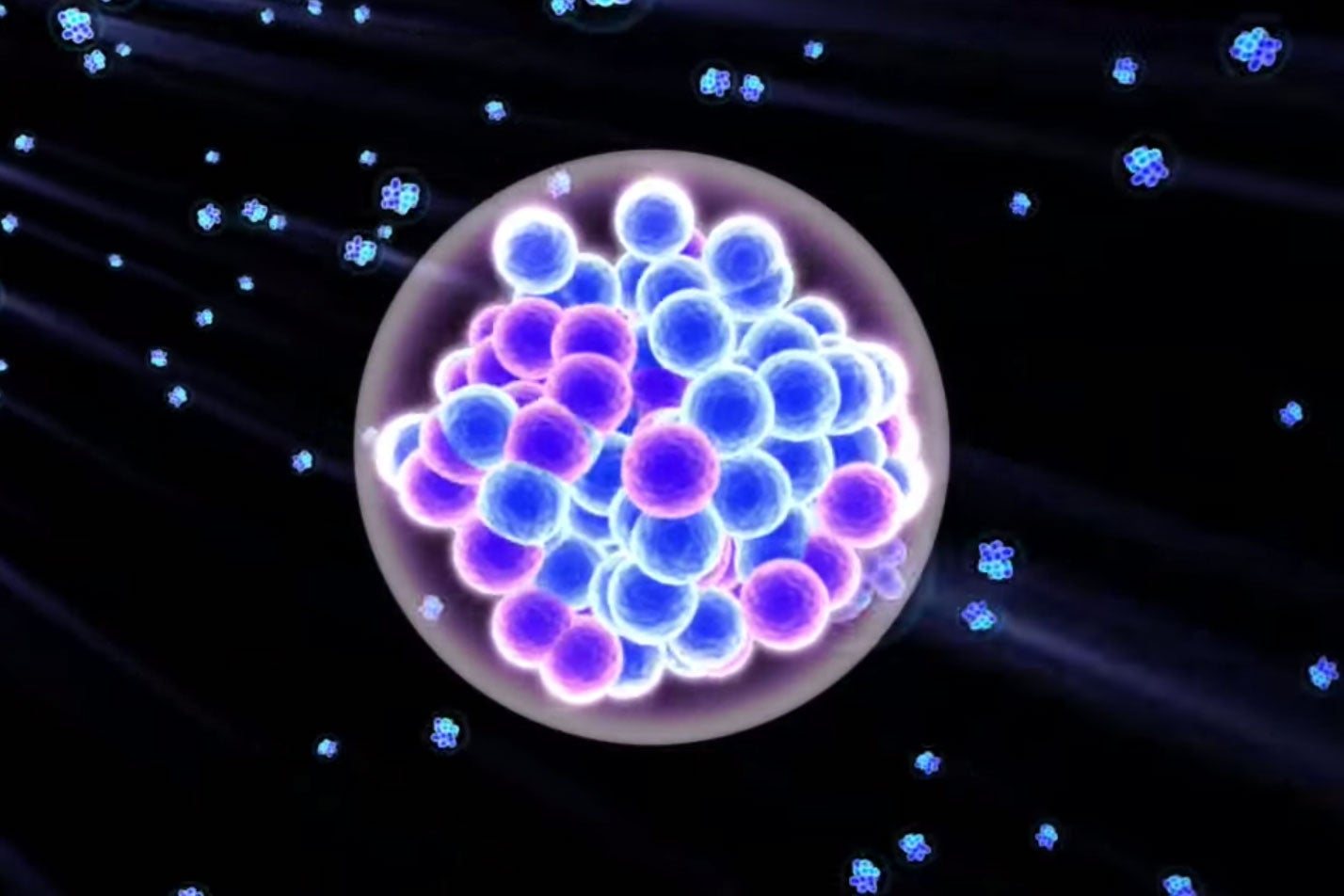The periodic table is getting a new addition - say hello to element 117: ununseptium
The 'superheavy' element existed for only a fraction of a second - but it takes scientists one step closer to the periodic table's theorised 'island of stability'

Your support helps us to tell the story
From reproductive rights to climate change to Big Tech, The Independent is on the ground when the story is developing. Whether it's investigating the financials of Elon Musk's pro-Trump PAC or producing our latest documentary, 'The A Word', which shines a light on the American women fighting for reproductive rights, we know how important it is to parse out the facts from the messaging.
At such a critical moment in US history, we need reporters on the ground. Your donation allows us to keep sending journalists to speak to both sides of the story.
The Independent is trusted by Americans across the entire political spectrum. And unlike many other quality news outlets, we choose not to lock Americans out of our reporting and analysis with paywalls. We believe quality journalism should be available to everyone, paid for by those who can afford it.
Your support makes all the difference.The periodic table of elements is one step closer to welcoming a new addition to its ranks after scientists independently confirmed the existence of a highly radioactive 117th element.
An international team working at the GSI Helmholtz Centre for Heavy Ion Research in Darmstadt, Germany, were able to create four atoms of ununseptium (the name is a Latin placeholder meaning ‘117’ - a more official title will come later) four years after the element was first spotted by US and Russian researchers.
Like other superheavy elements that populate the tail end of the periodic table, ununseptium only exists for fractions of a second before decaying into other elements.
Scientists hope that its creation is the latest step towards the discovery of the so-called ‘island of stability’ – a predicted group of massive but stable atoms expected to appear somewhere around atomic number 120 onwards.
An atomic number counts the protons within the nucleus of an atom which - along with neutrons - make up the vast majority of an atom’s weight (they’re both around 1800 times more massive than electrons). Like electrons these particles are divided into different shells or levels of atomic energy that predict the element’s stability.
Certain ‘magic numbers’ of protons or neutrons are known to be particularly hardy, and some scientists have predicted that once they make it through the volatile numbers (such as 117) then elements located within the ‘island of stability’ could have half-lives of millions of years - a quality that is not unusual in itself, but that opens up a range of never-before-seen applications when applied to larger elements.
By comparison, ununseptium existed for less than a tenth of a second in the Helmholtz particle accelerator before decaying into a mass of different elements including dubnium (atomic number 105) and lawrencium (atomic number 103).
The team from the GSI Helmholtz Centre led by Christoph Düllmann were actually trying to create element 119 at the time by using a particle accelerator to fire titanium atoms (atomic number 22) at berkelium (atomic number 97).
Transuranium atoms (those with an atomic number greater than uranium’s 92) rarely if ever occur in nature, and have to be artificially created by smashing together lighter elements with the correct atomic numbers.
This heavy-handed style of atomic adding up might sound simple but such experiments are extremely hard to replicate, not least because of the rarity of the target material.
Berkelium, for example, is produced in only very small amounts as a by-product of nuclear reactors and has a half-life of 330 days, giving scientists a limited time frame to use it in experiments. Just 13 milligrams of the highly purified material were used in the creation of ununseptium.
The paper detailing the experiment will be published in the journal Physics Review Letters before being reviewed by the International Union of Pure and Applied Chemistry (IUPAC) – the body responsible for ordering and naming the elements of the periodic table.
If they give the thumbs-up then ununseptium will become an official element - a small but significant addition the general store of human knowledge that quietly makes chemistry textbooks across the world out of date.
Join our commenting forum
Join thought-provoking conversations, follow other Independent readers and see their replies
Comments